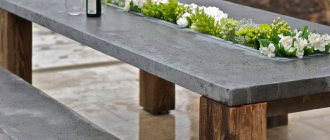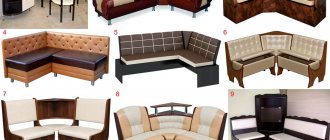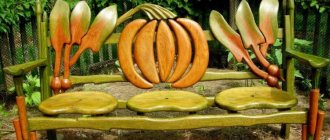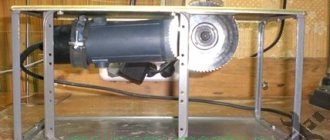You don't always have to buy a designer sink to decorate your personal space. Today there are many interesting materials that you can use to make beautiful and practical furniture with your own hands. An epoxy resin sink will decorate a bathroom, kitchen, or become the highlight of your country house. Epoxy acts as the main component of the sink or binds wood, stone chips, and liquid stone. By adding dyes and water, you can achieve interesting decorative effects that will cause rave reviews.
Design options
Concrete sink designs can be classified according to a fairly large number of characteristics.
Depending on the design it may be:
- Concrete countertop with recess for sink
- Freestanding sink.
Each option has its own advantages and disadvantages. The choice depends on the room where the sink is supposed to be installed. For the kitchen, installing a combined sink would be an excellent option. So, without extra costs, you can install additional work surfaces, which are always the weak point of the interior, since a large number of surfaces is unsightly, and a small number is inconvenient.
For the same option to be appropriate in the bathroom, you need to have a room of sufficiently large dimensions. Rarely does a modern apartment have a bathtub of this size. But in a private house in a spacious bathroom this would be a good option. Such a sink will emphasize the spaciousness of the room. If this is not particularly necessary, then in the bathroom it is better to get by with a free-standing product.
Depending on the shape, the sink can be:
- Geometric shapes
- Traditional or round shapes
- Original
Here everything depends solely on the preferences of the owner. The only thing worth mentioning is the depth of the sink. If you are installing a purchased product, be prepared for a shallow sink depth. This was done for a reason. The fact is that only with such parameters concrete fully reveals its aesthetic properties. A deep concrete sink is not beautiful. Therefore, if, due to technical requirements, you require a deep sink, then it is better to choose a different material.
Popular models
Unique Wood Design
The following brands were among the first to create wooden plumbing fixtures:
- Unique Wood Design (Poland). The company's history began with the construction of yachts and rowing boats. Subsequently, the experience of working with wood was used to create bathroom equipment. The “Classic” collection consists of the usual oval, smoothly rounded bathtubs and washbasins. The Tlon line, which includes rectangular and square sinks, is designed for modern interiors.
- Ammonitum (Switzerland). A characteristic feature of all models is the deliberately striped pattern of the wooden surface. It resembles the spiral shell of the ancient ammonite mollusk after which the brand is named. The most recognizable washbasin models are Conos, Taurus, Bootes, Vela.
- A Legna (Switzerland). The Laguna Pure collection features wooden sinks in rectangular and round shapes. The pattern of tree rings is arranged in such a way that the sinks resemble blooming tropical flowers.
In industrial production, veneer sheets are used to make sinks, which are impregnated with a special moisture-proof resin and then glued together under high pressure.
Benefits of concrete
So, let's look at the main advantages of this material and what sinks can be made from it.
The first is its low cost. This building material is available to almost everyone.
Secondly, high strength and reliability. Concrete consists of components such as cement, sand, crushed stone, and special additives (for example, marble or quartz chips). All these components give the material stability and durability.
The third quality can be called versatility. Concrete sinks fit equally well into any design style. This is especially true for loft, hi-tech, minimalism, and grunge styles.
Design
Regardless of the final outcome of the manufacturing process, you first need to create a design. The completed drawing will facilitate the presentation of the entire production process, will help to anticipate and eliminate possible errors and difficulties. Generally speaking, the drawing will greatly facilitate the execution of all work.
Initially, it is worth finding out what components your kitchen set consists of. To do this, you need to study the available list of similar products and choose the required option. After this, you need to find out the exact dimensions of the upcoming concrete countertop. To find out, you need to measure the length and width of the empty area, taking into account the pieces of furniture that are nearby. In the event that the product will come into contact with a corner, you also need to measure the angle, since in reality it may not be straight.
For normal and full functioning, the thickness of the concrete countertop should not be less than 5 centimeters. But you shouldn’t make it much thicker, because in this case the weight of the product increases significantly.
The location of the sink in the kitchen, its size and shape are of great importance. It would be much better to purchase the sink before starting to manufacture the product.
In this case, it will be easier to make the hole, and the result will be more accurate. An equally important detail is the location of the tap, because it will also need a hole.
In the case of a built-in sink, you need to check whether it overlaps the countertop. If everything is in order, then you can start making a template for the hole. To do this, turn the sink over and outline it with a construction pencil.
In the case of an overlay sink, it is necessary to measure the inside part where it will come into contact with the overlay part. If the internal part does not have a rectangular shape, then it is worth making a rectangular template according to the largest measurements of the internal part. The main thing is to make such a hole that the sink will fit. It is even allowed for the hole to be slightly larger than required.
Now you can make a drawing of real size using the data obtained. To do this, you will need a sheet of plastic or chipboard. We carry out the design on it
We apply all the required dimensions and holes very carefully and carefully, everything should be as close as possible to the intended product
How to choose furniture for the kitchen
The main parameters for choosing kitchen furniture are the size of the room. The number of installed cabinets and their location depends on this. A cabinet with a sink occupies a special place in this matter, since for a kitchen with a small area its correct placement can significantly expand the working area. The designs come in the following types.
Direct floor
The most common option that is suitable for any room. They hide communications, securely hold the sink, can be of various sizes and be equipped with additional shelves.
Straight cabinets are the simplest option.
Angular, L-shaped
They will help save space, since corners are rarely used practically.
A corner cabinet will help save space.
Trapezoidal
These are quite large and spacious cabinets, behind which you can not only hide a trash can, but also use them to store things and equipment.
Trapezoidal cabinets are quite spacious.
We draw a drawing and select materials; preparations are in full swing
One of the most important steps on the path to producing a concrete surface is creating a drawing. This is necessary in order to know exactly the dimensions of the tabletop, as well as its appearance. To ensure that the product is firmly attached and does not wobble during operation, it must be installed as tightly as possible to the walls. You should also not forget about the sink - its dimensions and location are indicated in the drawing. The same applies to the corner, because kitchens are very often corners, and that’s where it usually happens. Ideally, the angle is straight and 90 degrees - this will greatly facilitate the work process. If the angle is slightly different, you will need to take this into account during construction work, and also note it when preparing the drawing.
In some cases, it is recommended to make a surface from several individual components. This method is due to the fact that for large kitchens the surfaces are very bulky and heavy. If the product is divided into several smaller structures, then it will be much easier to work and install them. In addition, it will be possible to avoid cracks and chips that may appear in the event of unsuccessful processing or moving heavy objects. Having drawn a sketch, you can begin collecting the necessary materials and tools. Choose high-quality and reliable equipment. For work you will need the following items:
- plastic sheets 18 mm thick;
- plywood sheets;
- hardwood boards;
- sand and cement for mixing the solution;
- polymer concrete made from acrylic resins;
- reinforcing mesh to strengthen the structure;
- decorative elements - shells, small pebbles, broken glass to decorate the surface;
- spray adhesive;
- silicone sealants;
- colors – special coloring pigments to give the surface the required color shade.
Naturally, we cannot do anything without tools. For successful work you will need the following tools:
- 1. building level;
- 2. wood hacksaw;
- 3. screwdriver – required for installation of formwork and its subsequent disassembly;
- 4. spatulas, levelers, trowels for working with uncured concrete;
- 5. polishing wheels;
- 6. sandpaper;
- 7. grinding machine.
Preparation of formwork
When making your own countertop, it is important to complete this area of work with the utmost precision and accuracy. After all, the strength of the product and its appearance in general will depend on the quality of the workpiece.
After a decision has been made regarding the height of the structure, parts of the required length need to be cut from the beams - these are the vertical parts of the future formwork. They will need to be secured to the floor. To do this, you will need profiles. If the contact with the walls is direct, then the racks must be drilled through. They are secured using anchor dowels. After fixation, the vertical parts are connected to the horizontal ones. Thus, the formwork frame is ready.
To make the lower part you will need a wooden MDF sheet. The formwork must be made in such a way that the concrete can be pulled out later without damaging it.
If the countertop has a sink, then you need to place a metal ring inside in the required place. Also, when using the hob in the future, this place must also be marked.
Bathrooms are a special place in the home, an island of bliss created for relaxation and relaxation. Being alone with yourself and soaking in a fragrant bath after a hard day at work is a great pleasure.
Despite the often compact size of this room, it is important to create a cozy and comfortable interior in which an atmosphere of peace and harmony will reign. Bathroom arrangement should be taken seriously, carefully considering every detail
Incorrectly selected furniture and accessories can immediately ruin the entire look and impression of the interior. And, conversely, a small touch, and the interior will be transformed and sparkle with new colors
Bathroom arrangement should be taken seriously, carefully considering every detail. Incorrectly selected furniture and accessories can immediately ruin the entire look and impression of the interior. And, conversely, a small touch, and the interior will be transformed and sparkle with new colors.
Safety regulations
The manufacture of products from epoxy resin should only be carried out in compliance with safety rules:
- When working with epoxy resin, you need to wear protective clothing, be sure to protect your respiratory organs with a respirator and your eyes with goggles.
- The place where work is carried out must be well ventilated.
- If epoxy gets on your skin, wash it off quickly with soap.
- Do not pour resin into food containers.
Expert opinion
Oleg Vasiliev
Master of making furniture and interior items from epoxy resin. She creates unique items to order in her own production.
to the master
This means containers from which you plan to eat or drink something later, and using, for example, disposable cups for mixing resin is quite convenient and cheap.
Stages of work
Regardless of the product being manufactured, you first need to find out its size and shape. If you are replacing an old countertop, you can use its measurements.
If a completely new product is being manufactured, then it is worth taking measurements of the base, and also taking into account the existing requirements for the selected room
In order to have a template before your eyes, you can try to make a drawing of the tabletop on paper; you are even allowed not to make marks for different types of holes. Next you will need a full-fledged life-size template. To do this, you need to take a sheet of thick cardboard, of such a size that you end up with a full-fledged template. If the cardboard is small, then for the actual volume of the product you will have to glue the parts together. If you have large cardboard, then simply cut out the required layout. When the template is ready, you need to check that it fully matches the dimensions. To check, you should place it on the desired area and make sure that everything is accurate and there are no distortions. After such checks, the concrete countertop will be completed quickly and easily. Now you need to divide the template into separate parts. Once you have ready-made detailed templates on hand, you can begin production of the product itself.
Style and design
The style of sinks varies depending on the shape of the bowl and its surround. In the kitchen, as a rule, the bowl is installed on a surface made of rough, varnished wood. This combination of incompatible things gives a special effect, which in design is called eclecticism.
The bowl shape is usually a flat stone with a small notch in the middle. Bowls in the form of a hemisphere stand separately
They look nice and are chunky enough to attract attention, but they're more of a decorative item than a handy device. Therefore, it is better to refrain from such a purchase
Bowls recessed into the countertop are particularly convenient and functional. It’s easy to move dirty dishes from the countertop into this sink without spilling anything on the floor. Otherwise, everything depends only on the customer.
Types of forms
Manufacturers offer a wide variety of design options. On today's market you can find a model that meets all the necessary needs.
Basic forms of concrete sinks:
- shells are an elegant and original option that allows you to embody the most interesting design ideas;
- integrated - they represent a single whole space with the surface of the countertop, simply being built into it;
- rectangular - the simplest and most common type that prevents water from splashing while washing dishes;
- oval - the most convenient option to use.
Thus, you can easily choose the shape of the sink that will harmoniously fit into the interior of any style and will be convenient to use.
The process of creating a concrete sink
So, we’ve prepared the tools, learned about the pros and cons, been inspired by the forms, it’s time to get to work!
Markings are applied to the prepared (cleaned of paint or plaster) wall surface near which the sink will be located. To avoid distortions, a building level is used. Since you will be creating your masterpiece from scratch, there are no restrictions, you are guided only by your taste.
Now it's time to start formwork. First, make a layout from cardboard: firstly, this way you will clearly see the result that you need, and secondly, if the expectation does not coincide with reality, it is faster and easier to remake a cardboard layout than finished formwork.
After this, you can begin to bring it to life. The base and sides are made separately, then they are fastened together with self-tapping screws and steel corners. The joints are treated with sealant.
Now we create something with which the sink will be firmly attached to the wall - the fittings. We use a hammer drill and a drill to punch holes in the wall for the rods. We put a metal washer on each of them, weld it and hammer it in so that the reinforcement fits tightly into the wall. The intersections of the rods are also welded or tied with wire.
We install formwork on the resulting structure. Additionally, we attach it to the wall with corners, dowels and self-tapping screws. But that’s not all: since the next stage is already connected with concrete, we immediately place brick supports below, which will take on its entire mass.
Time to get to the solution! Mix cement, sand and granite crushed stone in a ratio of 1:3:3. Then add the same amount of water as this mixture is obtained (that is, if half the bucket is filled, then you need to add enough water to fill the bucket completely).
Mix our “porridge-malasha” with a construction mixer. After this, we pour it into the formwork in layers. If you want to create a decorative colored surface, then a separate solution is prepared for concrete with dye.
Now we just have to wait. After a week, you can remove the formwork and plastic pipes. Dismantling is done from top to bottom. It is best not to remove the supports at this stage, even if the sink looks solid.
You can start decorating. It's up to your taste: you can lay tiles, or simply sand the surface and apply a moisture-resistant coating to it.
In a month, the concrete will finally harden and all you have to do is remove the supports and connect the plumbing equipment. All is ready! Happy washing your hands and dishes!
What diseases are calla lilies susceptible to?
When the air temperature rises, inexperienced gardeners sometimes overwater the flowers; from such care they suffer from wet rot of the rhizomes or bulbs, and the bases of the leaves also get affected. The disease can quickly spread to neighboring callas, so the affected plant should be removed without delay. In order not to breed wet rot, it is necessary to regulate the air temperature and watering.
Brown rot affects the flower when heavy watering is carried out with enhanced nitrogen fertilizers. When the disease appears, watering must be stopped, the layer of wet soil around the bush must be removed and covered with dry soil.
What you need to make a concrete sink with your own hands
For this purpose, sand concrete M300, M400 or M500 is best suited - these are the types that can provide the most smooth surface. It will be even better if you add a plasticizer to the solution. Not everyone likes the gray color of concrete, so if you are one of them, you can additionally purchase a special dye at a hardware store.
You will also need clean fine sand (from 1.2 to 2 mm). Just wash and dry it before use.
Don't forget about the formwork. It will require particle boards, boards or sheets of plastic. If you want to experiment with shape, thin sheets of zinc-coated steel are ideal, as they are strong and bend well. In addition, you will need sheets of cardboard to create the layout.
To reinforce concrete, you will need steel rods with a diameter of 10–15 mm, and to strengthen the joints, you will need corners and tapes of the same material, fasteners and sealant. To support the weight of the sink while it dries, you need reliable supports - I recommend bricks as the simplest, most durable and inexpensive solution. While drying, the sink should be wrapped in plastic film, so make sure you purchase that too.
If you want to make an external finish, for example, with tiles, then you will additionally need tile adhesive and grout.
And finally, a list of necessary tools:
- jigsaw;
- hammer drill with concrete drills;
- screwdriver or screwdriver;
- hammer;
- metal scissors;
- welding machine;
- a large bucket to mix the concrete solution in;
- construction mixer;
- ruler or tape measure, pencil;
- building level.
Execution options
There are no restrictions on the shape - rectangular, square, round, with curves... Order a washbasin with or without a countertop, with one sink or with another required quantity. The base for the tabletop is made from any material that you can independently find elsewhere or purchase from us.
Advantages of the countertop sink from the Bershovo workshop:
- Stylish design that will harmoniously complement the interior of the room.
- The monolithic design guarantees protection against leaks.
- There is additional space for placing the necessary items.
- if you want to visually expand the space, choose narrow and long models,
- To fill spacious rooms, massive options are used (thick and wide countertop with 2-3 sinks).
You can buy a bathroom table with a countertop by calling the number listed in the “contacts” section. The company's consultants will answer your questions.
Loft is now more fashionable than ever. And that’s why everyone wants to replace even the usual earthenware sink with something more “lofty.” There are eccentric solutions, for example, a copper basin with a hole in the middle or a galvanized bucket, but such ideas are difficult to combine with a modern interior, and are not very convenient to use in everyday life. If you don’t want to complicate your life, then a sink made of real concrete will become the highlight of your loft and cannot be compared with any other option, in all respects.
Concrete is still not earthenware, but that’s why we’ve gathered here, to find out all the pros and cons.
It's at least original.
This is exclusive - each of our sinks is made by hand and can be considered a work of modern art
It is durable - a high-quality concrete sink will last for centuries, and maybe even thousands of years))
It is reliable - breaking off a corner is as difficult as with a faience sink
This is unique - the picturesque texture of concrete cannot be imitated by any other material
Now about the cons:
Vulnerability. A concrete washbasin can be either varnished or protected with impregnation. In the first case, it is well protected from dirt, but the coating is easier to scratch than earthenware enamel. In the second case, it is difficult to scratch, but it is necessary to constantly (once every 2-3 months) renew the impregnation, and if this is not done, then sooner or later stains may appear, which only sanding will help get rid of.
Price. Setting up a sink production process on an assembly line is very difficult. Therefore, if we are not talking about a piece of foundation weighing 200 kg, but about a sink made of high-strength and beautiful concrete, weighing an acceptable 20-40 kg, then this is painstaking manual labor with a large number of stages, complex technology and expensive materials.
Since all over the world, concrete sinks are much more often protected with varnish, we will tell you about it in more detail. Varnish for concrete in the interior meets several requirements:
1) it must be non-toxic;
2) lay down in a beautiful matte thin layer so that it is difficult to identify as something foreign;
3) do not allow water to pass through, because if the varnish allows water to pass through, it will also allow contaminants to pass through
4) be as scratch resistant as possible
Only one type of varnish meets all these requirements to the maximum - polyurethane, and even then not just any one. We conducted many experiments to choose the best varnish, but, unfortunately, we never found the perfect one in all respects. So when purchasing a concrete sink, prepare to be treated with care.
Don't expect miraculous performance and practicality from concrete or you will be disappointed. Although if you take care of such a product properly, then there will be no problems with it. Do not use aggressive acidic or strongly alkaline cleaning agents or abrasive sponges.
PS: And for lovers of everything real, I recommend bare concrete without coating. In this design, the sink will be as natural as possible. And over time, becoming covered with patina during use, it will only get better.
Important points
A sink (sink) made of epoxy resin, made with your own hands, is already the highest design class, due to its 3D shape, that is, volume. Moreover, the techniques that sculptors use in casting three-dimensional objects are completely unsuitable here. It's all about such a property of epoxy resin as exceptional adhesion, that is, the ability to penetrate into the structure of those materials with which it comes into contact during hardening.
Here, Vaseline, fat or soap, which the same sculptors use to isolate the casting form from the casting itself, so that they can then easily separate one from the other, will not work: they themselves will react with the epoxy, becoming part of its structure and only slightly changing its plastic properties, and you will have to tear it off “with meat”, hopelessly ruining the product and the expensive materials spent on it. Therefore, to isolate the matrix from the product being formed, a special molding and insulating wax, Honey Wax, is used.
In addition, unlike making flat surfaces like tabletops or chair seats, you will need at least 2 times more tools. These can be milling cutters, grinders with replaceable discs, and grinding wheels operating in “wet” mode, when the surface being processed is constantly wetted with water.
In the room in which the sink will be manufactured, reliable supply and exhaust ventilation is needed, because the gases and volatile substances released during the polymerization of epoxy are very harmful to health. Don’t forget about abrasive processing of molding materials or hardened epoxy resin: there will be no extraction, everything will be covered with a thick layer of dust. You need sufficient lighting, a workbench with clamps and clamps. So to mold this kind of product you need an insulated, fairly comfortable electrified shed or a ventilated and fairly spacious basement, but not a living room in an apartment or house.
Useful to know > What furniture is made from epoxy resin and what it looks like
Advantages and disadvantages
Concrete as a material for a sink has a fairly large number of advantages:
- Low corrosion activity and resistance to moisture. Concrete coated with a special composition will retain its appearance and shape for decades.
- Low material cost. Concrete is not a natural stone, so the cost of making or purchasing a concrete sink yourself is quite comparable to buying a regular ceramic sink
- High aesthetic qualities. Using various types of coloring additives, you can change the color of the sink within a fairly wide range. In this case, the shape of the future sink is determined by the casting mold, which can be absolutely anything. And special inclusions, which are created by replacing crushed stone with another filler, can create a full-fledged imitation of marble.
There are also disadvantages to a concrete sink, like any construction solution:
- Bulky. No matter what shape the future sink has, it will look bulky in any case. This technique is not suitable for elevated interiors. The design of a bathroom or kitchen in the style of a medieval castle or a rustic style will go perfectly with this choice. In addition, you need to take into account that bulkiness visually reduces the height of the room. Therefore, for low rooms it is better to choose a different design.
- Weight. No matter how much you call concrete an imitation of stone, they weigh, if not the same, then very similar. Therefore, it requires mounting on reinforcement that passes through the entire wall. For mounting, it is better to choose a load-bearing wall. An option for those who don’t want to drill into a load-bearing wall is to install a separate shelf under the sink. Such a shelf will easily support the weight of the product and will not require any special installation skills.
Original crafts for your home
The stone structure, including countertop and sink, is reliable, durable, and always looks great.
A similar concrete structure , made with your own hands like a tulip shell, is not much inferior to it both in terms of characteristics and appearance.
At the same time, the concrete option is cheaper, and in a home-made design, it is easy to take into account the characteristics of the room, the wishes and even the whims of the owner.
Required materials and tools
The whole difficulty of pouring a sink with your own hands is that for it, like for any concrete product or structure, you need to make formwork. The formwork must be reliable and waterproof. Therefore, the materials used are boards, OSB boards, moisture-resistant chipboard panels, the thickness of which should not be less than 20 millimeters.
To create the shape of the sink, or rather its bowl, you will need a metal sheet no more than 1 millimeter thick. Typically galvanized sheet metal is used for this. To create a reinforcing frame, you will need metal reinforcement bars with a diameter of 10 millimeters. Be sure to purchase furniture corners, with the help of which the parts of the formwork are connected.
Tools you will need:
- hammer drill with drills with a diameter of 10 millimeters;
- metal scissors, which will be used to cut out the shape for the sink bowl;
- screwdriver for fastening formwork;
- hammer;
- saw or jigsaw;
- mixer for mixing concrete mortar;
- container for mixing concrete mortar;
- building level;
- roulette;
- pencil;
- notched spatula;
- plastic pipes for forming a sewer drain (40 millimeters in diameter) and a mixer landing site (32 millimeters in diameter).
For the manufacture of plumbing fixtures, it is recommended to use concrete grade M400 or M500. The classic recipe for M400 concrete is one volume of cement, two volumes of sand and crushed stone (1:2:2). Since a concrete solution using artificial stone technology is used for the sink, instead of crushed stone, granite or marble chips should be added to the mixture, or better yet, screenings, which are three to four times cheaper.
Unique products from the Bershovo workshop
Take, for example, bath countertops made of decorative concrete; they look very stylish and elegant. They can become the highlight of any bathroom. In addition, this material is excellent for use in damp areas. A bathroom sink and countertop made of decorative concrete will serve you for many years without complaints.
You will find a large assortment of countertops for bathtubs made of decorative concrete here in the Bershovo workshop.
Such products are created from decorative concrete, which has high performance characteristics: it is resistant to temperature changes, humidity and the formation of mold and mildew.
The strength, resistance of this material to chemical and mechanical influences and reasonable price have made decorative concrete a material in demand today.
It is an excellent alternative to natural stone, while it is more pleasant and “warm” to the touch. And due to its antibacterial properties, it is also hygienic.
And this is a very important requirement for products intended for furnishing a bathroom.
Decorative concrete sinks create a special look in your bathroom. Decorative concrete sinks provide the opportunity to choose the color, thickness, style and shape of the product. Whether the sinks will be used in your bathroom or powder room, in a commercial office or restaurant application, requiring double or triple fabrication options, we can help you achieve a solution to your design challenges. Decorative concrete sinks will be made especially for you to suit any of your design requirements. We can offer you ready-made solutions in our Store or choose from the design options presented on this page.
Customer Reviews
Konstantin, Moscow : “My wife wanted a bathroom in an ecological style. The floor and walls were finished with boards, and a shower system a la a tropical shower was installed. But there was still no highlight. And then I decided to order a wooden sink. This is such a miracle! It is executed perfectly, smooth, smooth shapes. Washing your face in the morning is a pleasure!”
Irina, Moscow : “I had a dream - a wooden bathtub. So that, as in advertising, you can bask there in the foam and rose petals. But such baths cost exorbitant prices! So I decided to buy myself a wooden sink. And now every morning starts with a smile. I really like the way this sink looks. I love touching its glossy surface. Following the sink, I wanted to buy more wooden items for the rest of the apartment.”
Sink creation technology step by step instructions
The first step is to make all the necessary calculations and make a cardboard model of the future workpiece. The cut out planes are fastened together with a glue gun into three-dimensional shapes. Knowing all the dimensions, you can accurately calculate the volume of the sink and purchase the appropriate amount of materials.
Immediately regarding the composition of the mixture. To prepare a good sink, a concrete mixture using M-500 cement is quite suitable. The amount of water should be determined by the consistency of the solution, but the optimal water-cement ratio will be 0.3-0.35, that is, an average of 0.33 liters of water is poured per 1 kg of cement. Additionally, it is necessary to add plasticizer S-3 or SP-1 to the concrete in the amount of 0.5% to 1% of the weight of the cement.
The ratio of dry components is as follows: for one part of cement, take 2 parts of sand and 3 parts of small crushed stone. Since the structure will be small, you should be very careful in the selection of each ingredient for concrete. Buy cement from trusted manufacturers, with a strength grade of at least M-500, crushed stone should have a maximum fraction of 5-10 mm, and either buy sand specifically in construction stores, or sift it through a sieve with a 2x2 mm mesh.
In this case, a mixture was used, the consistency of which was selected experimentally and will depend on the quality and percentage of water in your sand. Focus on the consistency, which is clearly visible in the photos below.
After creating a cardboard model, you need to draw on it on laminated chipboard sheets every detail of the future shape into which the mixture will be poured.
The mold parts are attached to each other using a screwdriver and self-tapping screws, and the cracks are sealed with silicone sealant. Make sure that all internal surfaces are as smooth as possible, so that you do not later find unnecessary depressions or humps on the surface of the finished sink. Make all corners and junctions without sharp joints: create a smooth transition between surfaces using seams made of silicone sealant.
The next step is optional. In this project, it was planned to create a backlight, so glass balls purchased in advance were broken and fixed in shape with glue. Also, to enhance strength, reinforcement should be made in the form of a mesh of metal wire.
For future holes for plumbing and drain installation, plastic pipes of the required diameter are placed on the form. In the last photo you can see how a layer of sealant has been applied at the location of the future drain. This elevation on the form will then provide the necessary slope for water to drain when using the sink. A metal cover is installed on the hill, onto which the pipe is then attached.
Next, you should fill the horizontal surface of the mold with the solution - the future tabletop. During the laying process, the mixture is constantly processed with a concrete vibrator so that it fills the entire volume of the form as best as possible.
After this, the outer shell formwork box is placed on this surface. As you can see in the photo, it is an enlarged inner box mounted on horizontal slats. These strips are placed on the edges of the countertop formwork, causing the outer shape of the sink to hang above the horizontal surface, creating voids around the inner formwork. The solution is placed into these voids with a spatula.
The inclined plane, after filling with the mixture, is also covered with a sheet of chipboard.
When the entire solution is poured into the mold, it is covered with plastic film so that the liquid does not evaporate from the surface of the solution for at least another 7-10 days. This is necessary so that the concrete undergoes the process of gaining strength. If this part is not followed, the concrete will crack over time.
After the required period of time, the film and formwork are removed.
Next, the concrete surface must be sanded and coated with a protective compound. Here you will need a special grinder with a number of revolutions per minute from 4 to 5 thousand and a water supply. It can be rented at specialized rental shops.
And this is what the finished sink with countertop looks like.
Initially, a special lamp was placed in the mold, which can be seen in the photographs depicting the process of laying the concrete mixture.
It is made of a large number of light-transmitting fibers, distributed throughout the entire volume of the tabletop when pouring the solution. If you connect it, then at night the surface glows beautifully in those places where pieces of broken glass are located.
Internal filling of the table
Any housewife tries to use the kitchen space to maximum benefit. Therefore, many manufacturers are moving away from the usual cabinets that only contain space for a trash can. Today, underframes with drawers are quite popular.
You can store dishes in the lower ones, and other kitchen utensils in the upper ones.
If you don’t have such drawers in your sink base, you can make your own shelves for sponges and household chemicals. Drawers can also be combined with upper folding doors, behind which you can hide containers designed to store a variety of kitchen items. You can find out about the standard height of an apron in the kitchen here.
The most ergonomic option for using a table base is to combine different types of drawers (pull-out, folding) in one cabinet.
Formwork and reinforcing mesh influence of elements on product quality
The next stage is to form a wooden frame or formwork, into which we will pour concrete mortar to give it the required shape. It is necessary to make a strong frame that can withstand the pressure of concrete for several days. Formwork largely influences the quality and aesthetic appearance of the finished product. To create it, we use plywood sheets laid on a flat surface. Next, we transfer all the lines and strokes from the drawing to the plywood, exactly repeating the shape of the future tabletop. It is necessary to install wooden blocks 50 mm high along the perimeter.
To give the frame the necessary strength properties, pay special attention to fastening the walls. To do this, we will use long screws (at least 6 cm) or metal corners, which will provide connections of sufficiently high quality
Depending on the size and type of sink and faucet, we will determine the space for the sink. Today, overhead and built-in sinks are popular. There is not much difference between them, this also applies to cost. If you choose an overhead sink, then the only significant difference is the horizontal side, about 3 cm wide. When drawing up sketches and forming wooden frames for concrete, you need to remember this.
Experienced craftsmen note that countertop sinks are optimally suited for installation in self-made countertops. The reason lies precisely in the above-mentioned side, the presence of which makes it possible to allow small errors when forming the hole for the sink. In addition, built-in sinks have special seating chamfers, which cause great difficulties in the manufacture of a concrete surface. To make a hole for the faucet, you can use various tools. A plastic pipe with a cross-section of 35 mm is best suited. This diameter is the standard for faucet pipes.
After this, all we have to do is install the reinforcing mesh to strengthen the concrete structure. An ordinary steel mesh with a cell size of 25x25 mm is suitable. It is necessary to select the mesh so that it does not touch the walls of the wooden frame. Thus, the distance between the reinforcement and the formwork should be about 2 cm. There is one trick that allows you to avoid any appearance of the mesh on the surface of the concrete - you just need to cover the base of the formwork with a regular polyethylene film. In this case, the concrete will be even and smooth, but the mesh will remain inside and will not stand out in relief.
Additional Notes
Before you start work, you should decide on the choice of materials. It is not at all necessary to take only chipboard or boards; you can use plywood or fiberboard.
- Nails may be used as fastening elements instead of self-tapping screws.
- In order for the product to fit perfectly into the size of the sink, you should use a level that will help control the horizontalness of the structure. The coating can be made not only with varnish, but also with paint. The quality of the product will not suffer from this. When choosing paint, you should rely on your taste.
- Instead of a brush, you can use a spray bottle. This will make the job easier. It is recommended to start from the size of the sink and siphon. They must be integral with the manufactured product. This interior element will last for many years.
- It is good to saturate the chipboard with silicone to prevent the negative effects of moisture, because the sink is located above the structure, and drops of water will fall on the surface of the product.
Thus, with certain skills, a do-it-yourself washbasin cabinet can be designed and manufactured in just a few hours.











